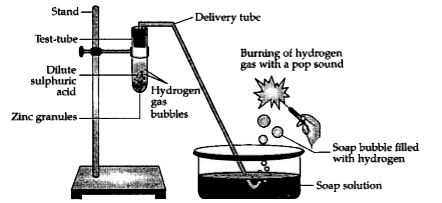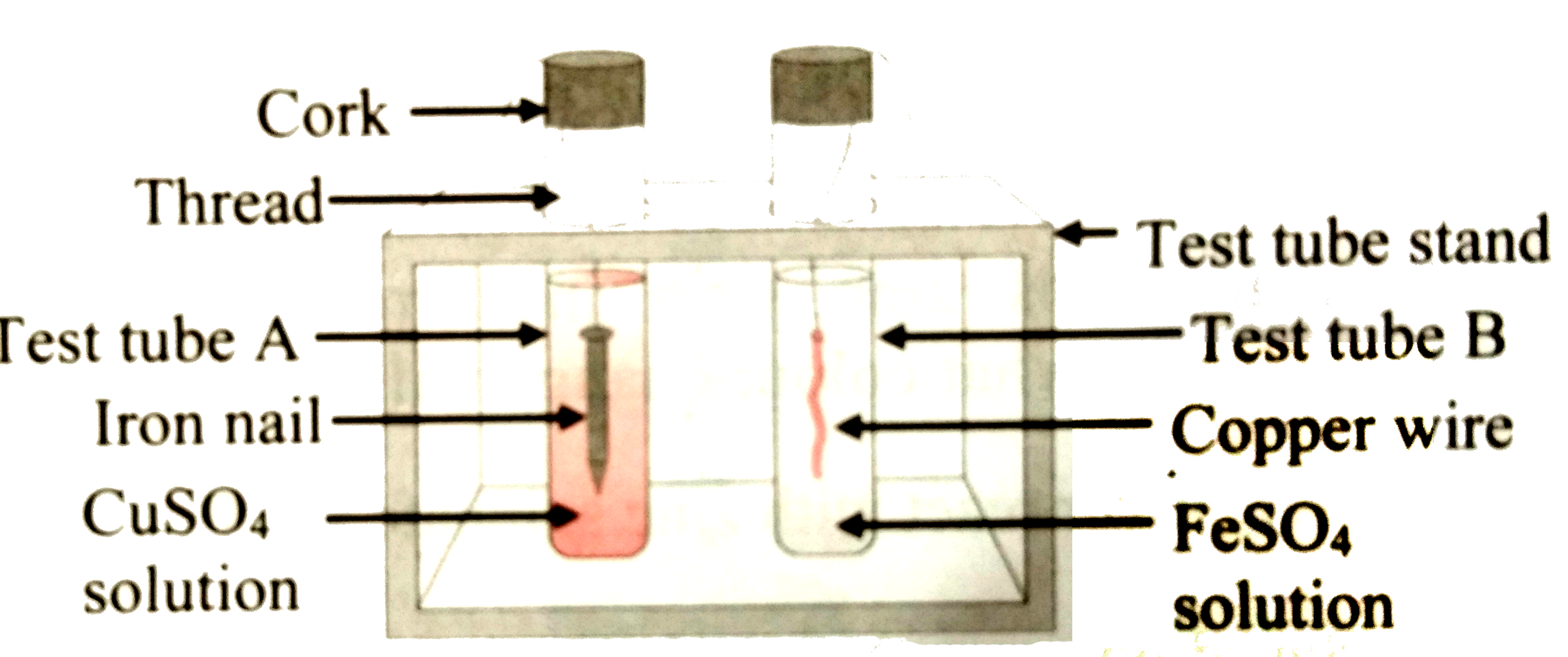Study the given experimental set-up and answer any four questions from (i) to (v) given below.
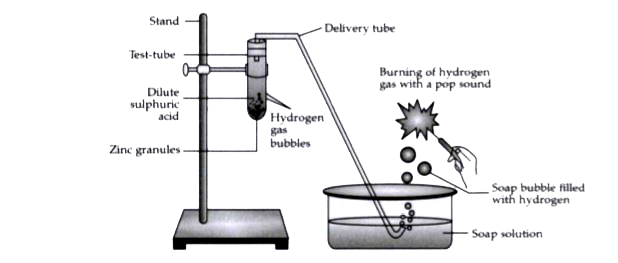
What will happen if NaOH is used in place of dil. sulphuric acid and the test tube is heated ?
It will produce sodium sulphate and hydrogen gas.
It will produce sodium zincate (salt) and carbon dioxide gas
It will produce sodium sulphate and carbon dioxide gas.
It will produce sodium zincate (salt) and hydrogen gas.
The correct Answer is:D
Step by step video, text & image solution for Study the given experimental set-up and answer any four questions from (i) to (v) given below. What will happen if NaOH is used in place of dil. sulphuric acid and the test tube is heated ? by Chemistry experts to help you in doubts & scoring excellent marks in Class 10 exams.
Updated on:21/07/2023Topper's Solved these Questions
- NEW CHAPTERS AND QUESTIONS BASED ON LATEST TYPOLOGIES INTRODUCED BY CBSE FOR 2021-22 EXAMINATION BOOK - OSWAL PUBLICATIONCHAPTER - NEW CHAPTERS AND QUESTIONS BASED ON LATEST TYPOLOGIES INTRODUCED BY CBSE FOR 2021-22 EXAMINATION EXERCISE - METALS AND NON- METALS (SELF ASSESSMENT) (OBJECTIVE TYPE QUESTIONS) (A. Multiple Choice Questions)
3 Videos
- NEW CHAPTERS AND QUESTIONS BASED ON LATEST TYPOLOGIES INTRODUCED BY CBSE FOR 2021-22 EXAMINATION BOOK - OSWAL PUBLICATIONCHAPTER - NEW CHAPTERS AND QUESTIONS BASED ON LATEST TYPOLOGIES INTRODUCED BY CBSE FOR 2021-22 EXAMINATION EXERCISE - METALS AND NON- METALS (SELF ASSESSMENT) (OBJECTIVE TYPE QUESTIONS) (B. Assertion and Reason Type Questions)
2 Videos
- NEW CHAPTERS AND QUESTIONS BASED ON LATEST TYPOLOGIES INTRODUCED BY CBSE FOR 2021-22 EXAMINATION BOOK - OSWAL PUBLICATIONCHAPTER - NEW CHAPTERS AND QUESTIONS BASED ON LATEST TYPOLOGIES INTRODUCED BY CBSE FOR 2021-22 EXAMINATION EXERCISE - CHEMICAL REACTIONS(VISUAL CASE - BASED QUESTIONS )
11 Videos
- METALS AND NON-METALSBOOK - OSWAL PUBLICATIONCHAPTER - METALS AND NON-METALSEXERCISE - Board corner(Long answer type questions)
20 Videos
- NTSE 2019 - 20 BOOK - OSWAL PUBLICATIONCHAPTER - NTSE 2019 - 20 EXERCISE - (CHEMISTRY) ATOMS AND MOLECULES (STAGE - 2)
1 Videos
Similar Questions
Knowledge Check
Study the given experimental set-up and answer any four questions from (i) to (v) given below.
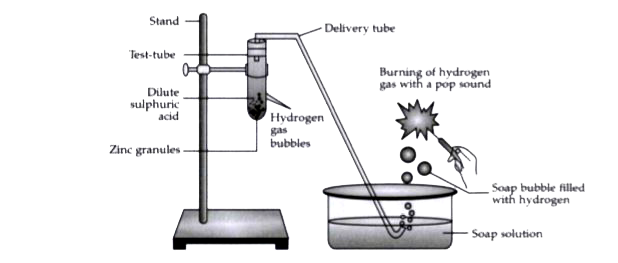
How will you test for the gas evolved ?ABring a glowing splint near test tube, it will reignite.BPlace a piece of moist litmus paper in a test tube of this gas, it turns red.CBring a burning splint near the opening of a test tube containing this gas, a popping sound occurs.DSmell the gas, it produces smell of rotten eggs.Study the given experimental set-up and answer any four questions from (i) to (v) given below.
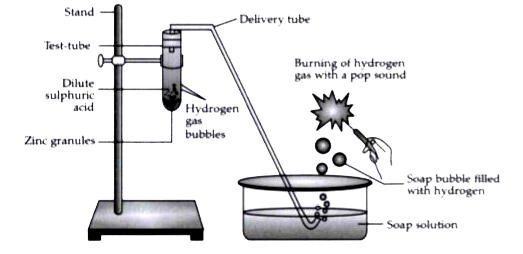
Which gas is liberated during the process ?AHydrogen gasBCarbon dioxide gasCSulphur dioxide gasDHydrogen sulphide gasStudy the given experimental set-up and answer any four questions from (i) to (v) given below.
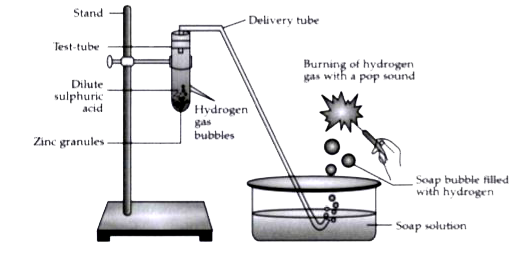
Identify the balanced chemical equation for the given reaction.AZn(l)+2H2SO40(l)→ZnSO4(s)+H2(l)BZn(s)+H2SO4(aq)→ZnSO4(aq)+H2↑⏐CZn(s)+H2SO4(aq)→ZnSO4(aq)+H2↑⏐D2Zn(aq)+2H2SO4(l)→2ZnSO4(s)+2H2(l)
Study the given experimental set-up and answer the following questions.
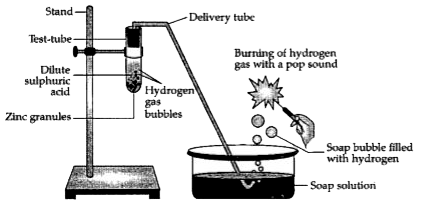
Write the products formed in the above process:
View SolutionStudy the given flow chart and answer any of the four questions
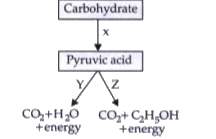
Identify X, Y and Z.
View SolutionStudy the given experimental set-up and answer any four questions from (i) to (v) given below.

The above experimental set up shows reactions between metal and _______.
View SolutionStudy the following circuit and answer any four questions given below:
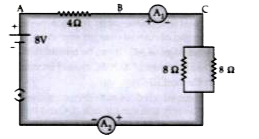
What will be the power dissipated in 4Ω resistor.
View SolutionStudy the following food web and answer any four questions from (1) to (v).
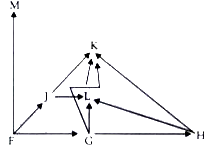
Which of these is the producer?
View Solution

